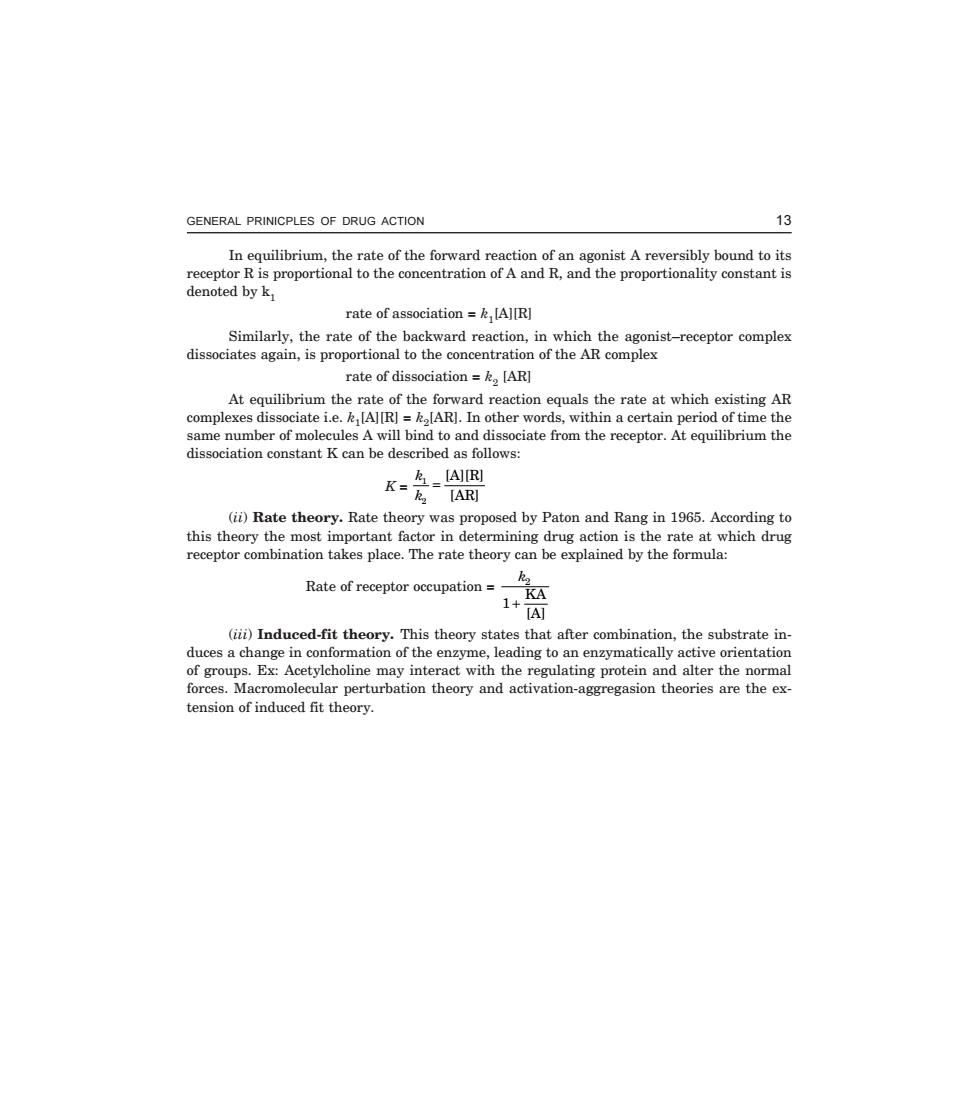正在加载图片...

GENERAL PRINICPLES OF DRUG ACTION 13 In equilibrium,the rate of the forward reaction of an agonist A reversibly bound to its s proportional to the concentration of A and R,and the proportionality constant is rate of association =k.IAllRI Similarly,the rate of the backward reaction,in which the dissociates aga is proportional to the rate of dissociation=[AR] At equilibrium the rate of the forward reaction equals the rate at which existing AR complexes dissociate i.e.AlR]=ARI.In other words,within a certain period of time the same number of molecules A will bind to and dissociate from the receptor.At equilibrium the dissociation constant K can be described as follows: IARI (ii)Rate theory.Rate theory was proposed by Paton and Rang in 1965.According to this theory the most important factor in determining drug action is th e rate at which drug receptor combination takes place.The rate theory can be explained by the formula Rate of receptor occupation=- (iii)Induced-fit theory.This theory states that after combination,the substrate in duces a change in conformation of the enzyme.leading to an enzymatically active orientation of groups.Ex:Acetylcholine may interact with the regulating protein and alter the normal forces.Macromolecular perturbation theory and activation-aggregasion theories are the ex- tension of induced fit theory.GENERAL PRINICPLES OF DRUG ACTION 13 C-8—N-CHEMI\CHE2-1.PM5 In equilibrium, the rate of the forward reaction of an agonist A reversibly bound to its receptor R is proportional to the concentration of A and R, and the proportionality constant is denoted by k1 rate of association = k1[A][R] Similarly, the rate of the backward reaction, in which the agonist–receptor complex dissociates again, is proportional to the concentration of the AR complex rate of dissociation = k2 [AR] At equilibrium the rate of the forward reaction equals the rate at which existing AR complexes dissociate i.e. k1[A][R] = k2[AR]. In other words, within a certain period of time the same number of molecules A will bind to and dissociate from the receptor. At equilibrium the dissociation constant K can be described as follows: K = k k 1 2 = [A][R] [AR] (ii) Rate theory. Rate theory was proposed by Paton and Rang in 1965. According to this theory the most important factor in determining drug action is the rate at which drug receptor combination takes place. The rate theory can be explained by the formula: Rate of receptor occupation = k2 1 + KA [A] (iii) Induced-fit theory. This theory states that after combination, the substrate induces a change in conformation of the enzyme, leading to an enzymatically active orientation of groups. Ex: Acetylcholine may interact with the regulating protein and alter the normal forces. Macromolecular perturbation theory and activation-aggregasion theories are the extension of induced fit theory